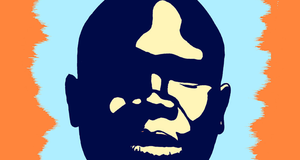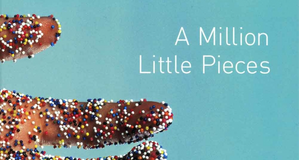Spiritual Autobiography and Dave Eggers' "What is the What"
By
2014, Vol. 6 No. 12 | pg. 4/4 | « Throughout the novel, he performs many compassionate acts for his fellow Lost Boys, including accepting a job burying his peers. Upon the death of his good friend, William K, Valentino chooses to stay behind and risk losing the group to give him a proper burial. Yet, the adult Valentino only looks back on this event as an example of how terrible things were for those fleeing, not as an instance of commendable kindness and compassion, recalling “It was a broken world, I knew then, that would allow a boy such as me to bury a boy such as William K” (Eggers, 2006). Through his silent humility and raw honesty, he is able to bear witness to the horrendous atrocities that occurred during the Sudanese Civil War and consequently, becomes a more reliable spiritual narrator. From 1990 to 1996, over four thousand memoirs and other autobiographical texts were published in a period Joyce Carol Oates terms “the age of the New Memoir” in her article, “Trauma, Coping, Recovery” (2003). These modern texts display a sequential pattern of deep pain and trauma, emotional release, and a conclusion of consolation over time. What is the What certainly shares aspects with the works characterizing “the age of the New Memoir,” but it primarily differs in its hope for recovery and reconciliation. Because of the novel’s incorporation of ongoing global problems, Valentino cannot resolve many of his experiences fleeing Sudan and struggles to adapt to life in the United States. He explains in the preface, “This book is a form of struggle, and it keeps my spirit alive to struggle. To struggle is to strengthen my faith, my hope, and my belief in humanity” (Eggers, 2006, p. 5). Unlike other spiritual autobiographies, the continuation of Valentino’s problems and failure to resolve them are essential for communicating the reality of the situation of the Sudanese refugees. His struggles keep these memories alive and he recognizes the effects of such difficulties on his life. It may be easy for readers to understand how struggle can strengthen one’s faith and hope; however, Valentino’s claim that it also strengthens his belief in humanity is perhaps most surprising after learning about all that he has endured.This wisdom and ability to overcome both physically and emotionally aligns this novel with other new memoirs as it demonstrates clearly the stages of trauma, coping, and quasi recovering, yet without a firm resolution. Tidy endings and the ability to find a stable conclusion keeps the problems and trauma “in the past, suggesting that there can be a finality to experience” (Gosselin, 2011, p. 142). However, there is never a finality to experiencing the many horrendous traumas of the Sudanese Civil War. Consequently, Eggers choice to deviate from traditional spiritual autobiographies and their distinct resolutions, creates a more real experience for the readers and portrays a stronger image of suffering, struggle, and spiritual strength. By witnessing the horrendous actions of others and reflecting upon the difficulties experienced, the novel simultaneously explores two distinct worlds and groups of emotions: those of the Lost Boys and those of the governments and militia at war. This addition to the narrator’s personal reflections captures aspects of which many other spiritual autobiographies are incapable. While both Augustine and Mary Rowlandson wrote their spiritual autobiographies at interesting times in history, neither comments on the situation of the world around them as much as Valentino in What is the What. Instead, their focus is primarily on their life with God and the events that happen to occur because of God’s will, and not on their interactions with the outside world and greater political and social influences. In The Limits of Autobiography, Leigh Gilmore explains how modern autobiographical texts and memoirs “would be inconceivable were it not for the social and political movements of the past thirty years” (2001, p. 16). The changes in our modern world have allowed for texts such as Eggers’ novel to evolve with details that are now expected and welcomed by today’s readers. Valentino’s incorporation of this historical period makes his ability to survive and remain emotionally stable even more remarkable and intriguing to readers. He reflects on his life, “I have examined my course, whether or not I have made mistakes, whether I have been a good child of God. And though I have tried to remain on course, and I have redoubled my efforts to pray and to attend Mass regularly, I have also realized that it is time to start my life again” (Eggers, 2006, p. 331). This brief conclusion demonstrates Valentino’s ability to move past these troubles and start anew, regardless of his inability to fix the events of the past. As an autobiographical novel existing between the worlds of fiction and nonfiction, What is the What successfully generates a new form of spiritual autobiography, as the speaker confesses, “This book is the soulful account of my life” (Eggers, 2006, p. 5). While it is reminiscent of its historical predecessors such as Augustine and Mary Rowlandson, the novel shows a distinct deviation with a greater emphasis on questioning a seemingly complacent and negligent God. The life-writing traits and unique moments of prayer and reflection also frame the novel in a more modern light, fitting for the time and place of the life being illustrated. The alterations to the traditional spiritual autobiographical narrative pattern found in this novel ordain Valentino’s account as that of a modern struggling saint. Egger’s placement of this novel outside of the world of absolute nonfiction allows the narrator this leeway to bear witness with proper reflection and to convey a more accurate and comprehensible story of the Lost Boys. Only through this spiritual style and reflective form is Eggers effectively able to convey the lessons learned during the Sudanese Civil War and create a warning for the world that these atrocities can happen again. ReferencesAugustine. (2009). Confessions. New York: Classic America. (Original work published) Bell, R. (1977). Metamorphoses of Spiritual Autobiography. ELH, 44(1), 108-126. The Bible: New International Version. (1984). Colorado Springs, CO: International Bible Society. Bowman, F. P. (1976). Suffering, Madness, and Literary Creation in Seventeeth-Century Spiritual Autobiography. French Forum, 1(1), 24-48. Eggers, D. (2006). What is the What: the autobiography of Valentino Achak Deng : a novel. San Francisco: McSweeney's. Gilmore, L. (2001). The Limits of Autobiography. “Represent Yourself.” Ithaca and London: Cornell University Press. 16-44. Gosselin, A. (2011). Memoirs as Mirrors: Counterstories in Contemporary Memoir. Narrative, 19(1), 133-148. Leigh, D. J. (2000). Circuitous Journeys: Modern Spiritual Autobiography. New York: Fordham University Press. Martin, D. (2006). Rescripting Spiritual Autobiography. Exchange, 35(1), 92-101. Miller, E. (2011). Dave Egger’s A Heartbreaking Work of Staggering Genius: Memoirs as a “Pain-Relief Device.” Journal of the American Psychoanalytical Association, 59, 983-1008. Moschella, M. C. (2011). Spiritual Autobiography and Older Adults. Pastoral Psychology, 60, 95-98. Oates, J.C. (2003). “Trauma, Coping, Recovery. Times Literary Supplement, June 20, p. 15. Parke, C. N. (2001) “Literary Lives: Biography and the Search for Understanding.” Biography. ProQuest. 24(4), 933-936. Phifer, N. (2002). Memoirs of the Soul. Cincinnati, Ohio: Walking Stick Press. Rowlandson, M., Baym, N., Franklin, W., Gura, P., & Krupat, A. (2007). A Narrative of the Captivity and Restoration of Mrs. Mary Rowlandson. New York, NY: W. W. Norton. Suggested Reading from Inquiries Journal
Inquiries Journal provides undergraduate and graduate students around the world a platform for the wide dissemination of academic work over a range of core disciplines. Representing the work of students from hundreds of institutions around the globe, Inquiries Journal's large database of academic articles is completely free. Learn more | Blog | Submit Latest in Literature |


















